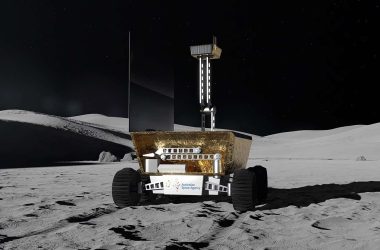The Vikram lander on the surface of the moon, as seen by the Pragyan rover
ISRO
The Indian Space Research Organisation (ISRO) is currently searching for signals from its Chandrayaan-3 mission on the moon’s surface. However, there have been no signs of the Vikram lander or Pragyan rover waking up after the harsh lunar night, which lasted for two weeks. If communication attempts are unsuccessful, it is likely that the hardware has been damaged by the freezing conditions on the moon.
On 22 September, ISRO tweeted, “Efforts have been made to establish communication with the Vikram lander and Pragyan rover to ascertain their wake-up condition. As of now, no signals have been received from them. Efforts to establish contact will continue.”
The Chandrayaan-3 mission was launched in July, and Vikram successfully landed on the moon’s surface on 23 August. The Pragyan rover was released and covered approximately 100 metres on the surface. Both devices completed their scientific experiments, and Vikram even performed a “hop” manoeuvre, providing valuable data for future landings.
After about two weeks, both devices entered “sleep mode” to prepare for the freezing conditions during the lunar night, which can reach temperatures as low as -238°C and pose a risk to their electronic components.
At this point, the mission was officially over. The scientific data had been transmitted back to Earth via the lander, and the devices switched off their payloads. The solar panel of the lander was positioned optimally to start producing power at the next sunrise. With the moon’s terminator now progressing past the landing point, the sun will rise in an angle to provide energy for the solar panels.
If the hardware of the rover and lander is undamaged by the cold, they are designed to boot up, resume transmission with Earth, and continue their scientific exploration. ISRO engineers are confident that the devices will restart once the sun rises again after two weeks, but they acknowledge the challenging conditions the components may have faced.
Sarah Casewell at the University of Leicester, UK, says, “This sustained period of cold may have caused issues with the equipment, and it may take longer to warm up than was previously planned, especially if the rover is in the shadow of a boulder. The mission was initially only intended to operate for 14 days on the lunar surface, which it did, meeting that goal. So waking up the craft in order to explore the lunar surface further would be a fantastic achievement for the mission team and their engineers.”
Topics:












